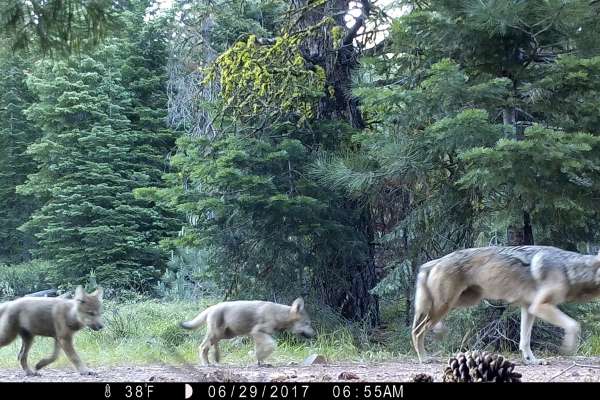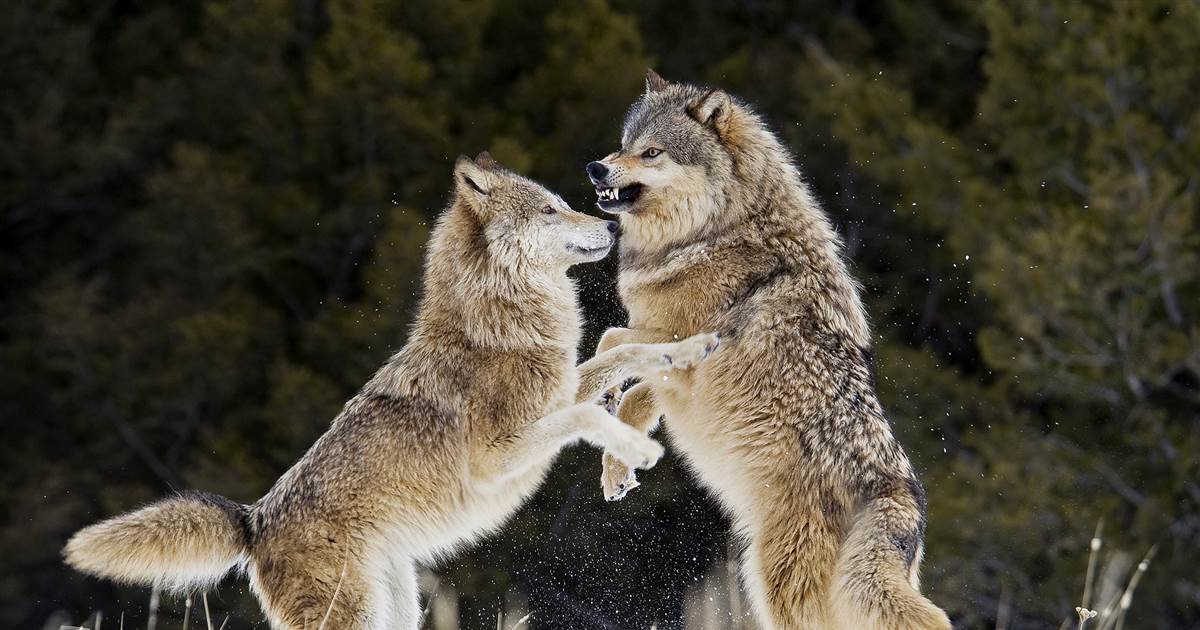A remote camera image from June 2017 shows a female gray wolf and two of the three pups born in 2017 in the wilds of Lassen National Forest in Northern California. The gray wolf, celebrated as one of the greatest conservation success stories in U.S. history, is expected to lose endangered species protections under orders by the Trump administration.
The move, anticipated Thursday, attests to the rising numbers of the storied predator, but it’s also sure to set off concern that the predator is not ready for the change and that wolf populations could perish in some parts of the West, including California. Nearly wiped out by hunters and trappers in the lower 48 states, wolves made significant inroads after federal safeguards were enacted in the 1970s.
The large, steely-eyed canines now thrive in parts of the Rockies and Great Lakes region, numbering over 6,000 across the contiguous United States. In much of their territory, however, packs remain thin, including California where just 14 wolves are known to roam today. The expected decision by the U.S. Fish and Wildlife Service to lift federal protections, allowing states to reclassify the animal as game or permit kills to protect livestock, could […]


Add a comment






